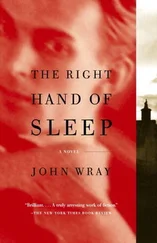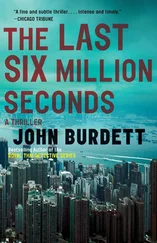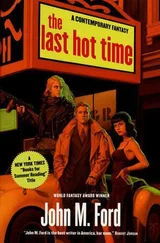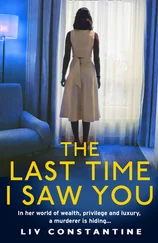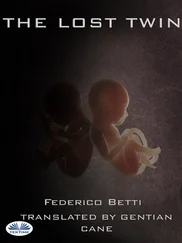Missives from the faithful arrived in our mailbox regardless. It was my job, once I was old enough, to bring in the mail, and I used to dread finding those letters: somehow I’d intuited that they were dangerous. The first were from the Listener himself, with the return address scrawled clumsily in cursive; then from Menügayan, typewritten; then from people we had never heard of, on corporate-looking UCS stationery. Orson passed them along, unread, to Ursula, who rolled them into tight little joints that she used to light the burners on our stove.
For a while near the close of the decade, the doorbell would ring at odd hours — most often between seven and eight in the morning — and Ursula would discover progressively more desperate “Iterants” (as UCS members had taken to calling themselves), always in groups of three, petitioning for an audience with the Prime Mover. Eventually Ursula took to calling the cops, and a court injunction was obtained, much to my parents’ and the neighborhood’s (and quite possibly the Iterants’ own) relief. All of which explains how it was possible for my father to go a full ten years without realizing that the UCS had become — both figuratively and by official church decree — the cult to end all cults, along with organized religion, Western philosophy, and the Internal Revenue Service. He had no one to blame for the shock but himself, needless to say — which didn’t make it any easier to stomach.
It had been a busy decade for the Church of Synchronology. They’d had a wobbly start, unsure how to market the G.S.M. (Gospel of the Scientific Method) — let alone the B.E.C.T. (Benefits of Emancipation from Chronologic Time) — to the general public, but their eyes had ultimately been opened, after a series of setbacks, to a wonderfully liberating truth: the general public was not their target demographic. The meek and the downtrodden and the underinformed were the stuff all great religions had grown fat on, and the fact that Religion with a capital r was the single greatest fraud ever perpetrated on humankind (aside from the persistent illusion, fostered by said Religion, that the arc of time tended from Present to Past) was no reason to reject its business model. What was an “empiricist,” after all, but someone who analyzed cause and effect, and adapted his theories accordingly?
Once this point was cleared up — by Haven himself, in the late spring of ’77—the path lay clear for global domination.
* * *
The first Theater of Simultaneity was consecrated in Tempe, Arizona, on September 17 of the following year. The entire UCS membership to date — all thirty-seven dues-paying members, not counting dependents — turned out for the groundbreaking ceremony, which was presided over by Archchronoclast Johnson, who dressed for the occasion in a tuxedo T-shirt and frayed dungarees. (The faithful, in those early days, looked more or less indistinguishable from graduate students in the humanities.) The appendix to The Excuse —dubbed “The Ω” by the UCS, and elevated to a sacred text in its own right — was read from aloud, after which the congregation traveled 6.5 seconds into the future. The “chronologic boom” this occasioned went unnoticed by the neighborhood’s residents, just as the First Listener had predicted it would. For those with ears to hear, let them hear , as a noted proto-chronoclast had put it.
The scene of this first — and admittedly modest — mass chrononavigation was a narrow dirt lot in a residential development on Tempe’s southwestern perimeter, occupied for the most part by lower- to middle-income retirees. Haven gave a brief speech, in which he cautioned the faithful that it might well take a decade, given scarcity of funds, for the Theater of Simultaneity to be completed. “Which span may have meaning for them ,” he said, waving a hand to indicate the neighboring condos. “Not so much for the chrono-enlightened. For us ,” he said genially, opening an imaginary door, “the temple is already finished. Won’t you come in?”
History teaches us, Mrs. Haven, that every great movement — however corrupt its eventual result — is launched in a fireball of idealism and brotherly feeling, which lasts exactly as long as the movement in question has nothing to lose. Even the Methodists were revolutionaries once, much as they’d like to deny it: they preached against slavery and patriarchy and private property, and had nearly as many women as men in the ranks of their preachers. So it only stands to reason that there must have been an era (or a moment, let’s say) when Synchronology was a genuine philosophy: fruit of the idea that The Excuse ’s description of “timespin”—which itself was just a mongrelized version of Waldemar’s “rotary time”—might be taken as the model for a different way of life. I have a hard time picturing this age of innocence, Mrs. Haven, but I’m willing to accept that it existed. If nothing else, it helps to explain the UCS’s meteoric rise.
Within a few years of that seminal afternoon on the outskirts of Tempe, the United Church of Synchronology had become the largest nonaccredited religious organization in America, with Theaters of Simultaneity in forty-seven cities nationwide. The IRS — which had long since revealed its Hidden Agenda by refusing to grant the UCS tax-exempt status as a recognized spiritual entity (code 501(c)(3)) — had finally buckled the tax year before, in the face of a wave of lawsuits (and a tsunami of threatened lawsuits) by the faithful. This spot of legal reshuffling had the result of making Haven’s little movement — which had been doing perfectly well already, thank you very much — wealthier than many midsized corporations.
Like any booming enterprise, the Church was faced with the problem of how to reinvest its profits, and — like any sober, well-counseled investor — it opted to diversify. Investments were made in everything from pharmaceuticals to coffee beans to LCD technology to Hollywood. Archchronoclast Menügayan, who’d overseen media and public relations for the UCS since the autumn of ’73, had been developing a film concept for quite some time, loosely based on book III of the Codex; she was a fervent devotee of The Excuse —perhaps the most fervent — so it’s no wonder that much of the text found its way into the shooting script verbatim. Church dogma has it that Haven himself came up with the title, though a competing account attributes it to Don Harvey Mueck, the goateed man-child director who hogged most of the credit for the movie’s success. And Timestrider: Clash of the Aeons was very successful indeed.
* * *
It was more than free-floating suspicion that brought us to Harlem that third time. I’d seen something else in the Timestrider credits: in considerably more modest type than BROUGHT TO YOU BY THE UNITED CHURCH OF SYNCHRONOLOGY, midway through a column of miscellaneous titles (cicada wrangler, acupuncturist, defribrillator) I’d spied the names of my aunts listed under “technical advisement.” Orson scoffed when he heard that, but I could tell that the news shook him; it had shaken me almost as badly. The adult world may never have made much sense to me, Mrs. Haven, but the filament connecting the General Lee to the Paramount backlot was beyond my capability to trace.
This time my father’s knuckles had barely brushed the doorframe before a strident voice — Gentian’s, I thought, though I couldn’t be sure — announced there was no need to raise a ruckus. The door was in even worse shape than I remembered (it was as battered as a road sign on an Indian reservation, with three disquietingly rat-sized holes along the bottom) and open just enough for me to see inside. It was Enzian who received us, not her sister. I could tell by the way she scrutinized Orson — nervously and defiantly at once — that she’d guessed the reason for our sudden visit. Her expression wasn’t lost on Orson, either.
Читать дальше

